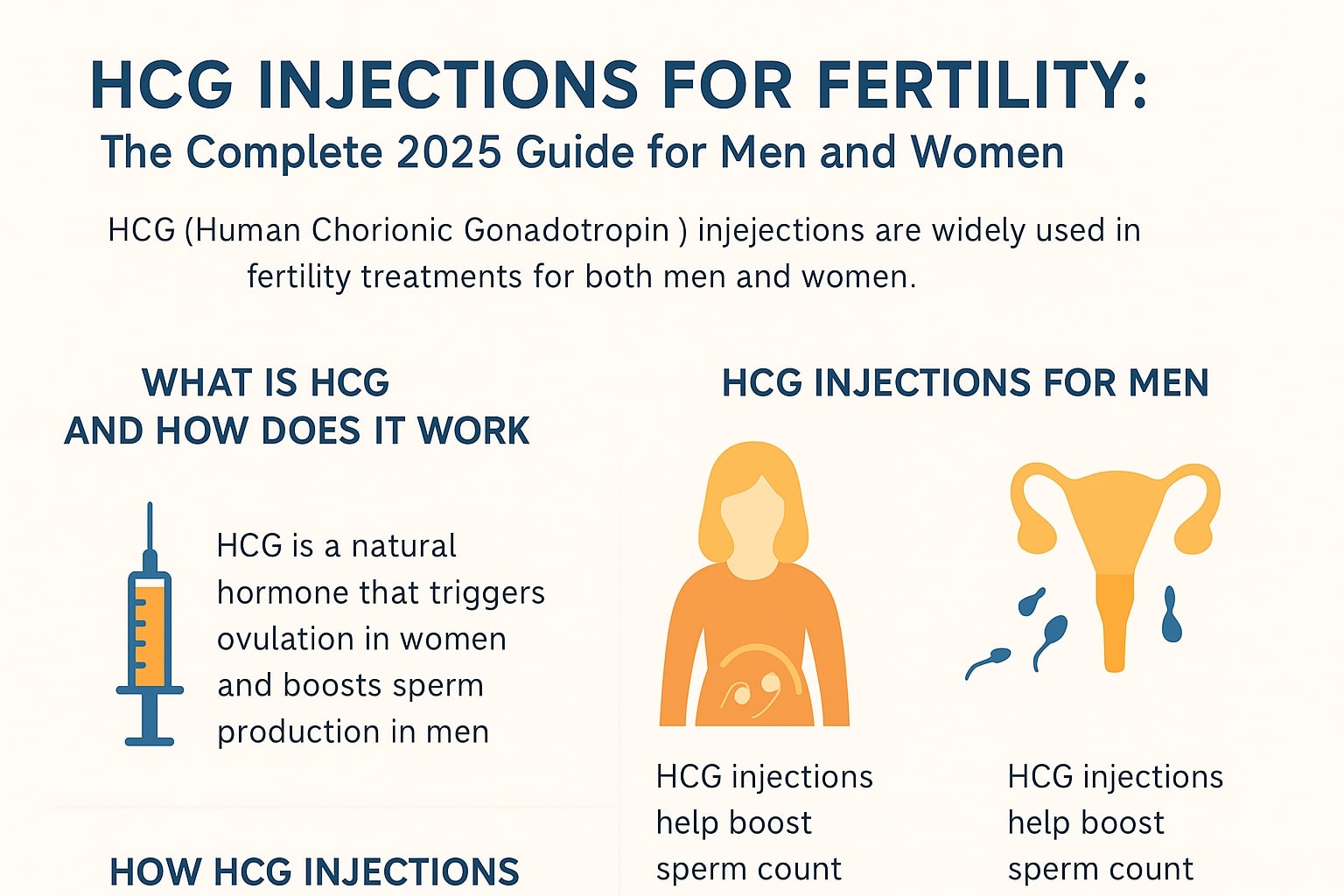What is HCG?
Human Chorionic Gonadotropin (hCG) is a hormone naturally produced during pregnancy. It mimics the action of Luteinizing Hormone (LH), which triggers ovulation in women and stimulates testosterone production in men. Synthetic hCG is commonly used in fertility treatments to induce ovulation or improve sperm production.HCG for Women HCG plays a key role in female fertility treatments, particularly for those with ovulatory issues.
Ovulation Induction:
- Used in treatments like Intrauterine Insemination (IUI) or In Vitro Fertilisation (IVF) to trigger the release of mature eggs from the ovaries.
- Timing ovulation ensures the precise release of eggs, which is critical for successful conception. It supports the luteal phase, maintaining the uterine lining to support early pregnancy.
Typical Dosage:
A single intramuscular dose of 5,000–10,000 IU, often after pretreatment with medications like human menotropins.HCG for Men: HCG is effective for male infertility, especially related to low testosterone or poor sperm quality.
- Boosting Testosterone and Sperm Production: Stimulates the testes to produce more testosterone and improve sperm count and motility.
- Addressing Low Sperm Count or Quality: Helps in cases of hypogonadism, where the body doesn’t produce enough testosterone.
Typical Dosage:
Low-dose protocols (e.g., 500–2,500 IU, 2–3 times per week) or high-dose options, often combined with other gonadotropins. Treatment starts with monitoring serum testosterone levels. Administration
- How to Inject: For subcutaneous injections, pinch the skin and insert the needle gently. For intramuscular, stretch the skin and inject slowly, always under medical supervision.
- Frequency: Varies by protocol—typically 2–3 times per week for men; single dose for ovulation trigger in women.
Advancements in HCG Therapy (2025)
- Personalised Dosages: Tailored to individual hormone levels and fertility goals for optimal outcomes.
- Combination Therapies: Often paired with Follicle-Stimulating Hormone (FSH) to enhance results in both IVF and male infertility treatments.
- Minimally Invasive Delivery: Subcutaneous injections have become increasingly common, offering reduced discomfort compared to intramuscular methods.
Side Effects and Considerations:
Generally safe, potential side effects include:
- Ovarian Hyperstimulation Syndrome (OHSS) in women (rare but serious).
- Headaches, fatigue, or mood swings.
- Injection site reactions (redness, swelling).
Consult a fertility specialist to determine if HCG is right for you. Monitoring is essential to adjust doses and minimise risks.
Conclusion:
HCG injections remain a cornerstone of fertility treatments in 2025, offering promising solutions for both men and women. With personalised approaches and safer delivery methods, they help achieve family-building goals effectively. Always seek professional guidance for tailored treatment.
Marie
Latest posts by Marie (see all)
- How to use Glyco cream for pigmentation, dark spots, and melasma? - November 21, 2025
- Tazret Forte Cream vs Tretinoin: Which Works Better for Acne and Anti-Aging? - November 8, 2025
- Revize Micro Gel vs. Other Retinoid Creams: Which One Works Best? - November 3, 2025




